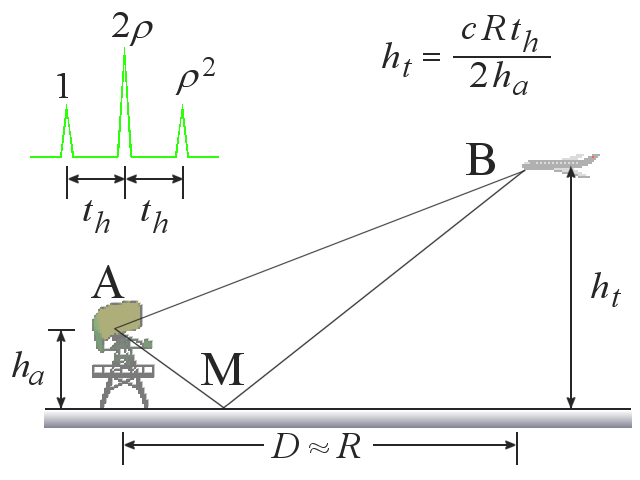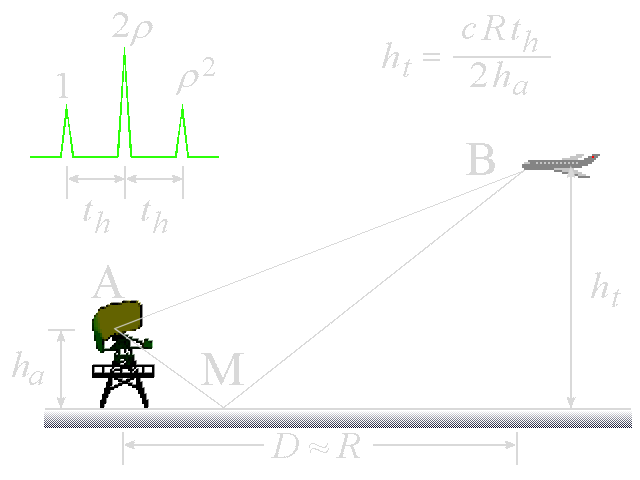Multipath Height Finding Method

Figure 1: Multipath Height Finding Method

Figure 1: Multipath Height Finding Method
Multipath Height Finding Method
The height of a target traditionally is found with a 3-D air-surveillance radar; one that utilizes multiple beams in elevation or employs one or more scanning pencil beams to find the elevation angle of the target. The 3-D radar has been widely used in the past even though it might have been from four to ten times the cost of a 2-D (range and azimuth) air-surveillance radar. A 3-D radar generally has poor height accuracy at low angles because of multipath effects when the main beam of the antenna illuminates the land or sea surface.
Finding target height based on the multipath echo structure in a 2-D wide-bandwidth radar has some important advantages compared with finding height using conventional 3-D radars. With sufficient range resolution, the direct signal can be separated from the surface-reflected signal. The time separation between these signals depends on the target height (a flat-earth is assumed). There are four components to the multipath echo. The first is the direct path AB and return over the same path. The second is the path AMB and return via AB, or AMB+AB. There is also the opposite path of the same length (time delay); that is, AB+AMB. The fourth path is the path AMB out and back. The time th in Figure can be found as:
| th = | 2ha · ht | where | ha = radar antenna height ht = target height c = velocity of propagation, and R = range |
(1) |
| c · R |
If we note that ht /R is the elevation angle sin Θe to the target, then
| sin Θe = | c · th | where | Θe = elevation angle th = run time difference |
(2) |
| 2 ha |
| ht = | c · R · th | (3) |
| 2 ha |
For example, if ha = 100 ft, ht = 10,000 ft, and R = 50 NM , the time th is 6.69 ns, which requires a bandwidth of at least 149.5 MHz. The higher the elevation angle to the target, the greater will be the separation of the multipath echoes and the easier it is to measure an accurate time separation th. In practice the radar system with pulse compression should have a range resolution of 1 m.
